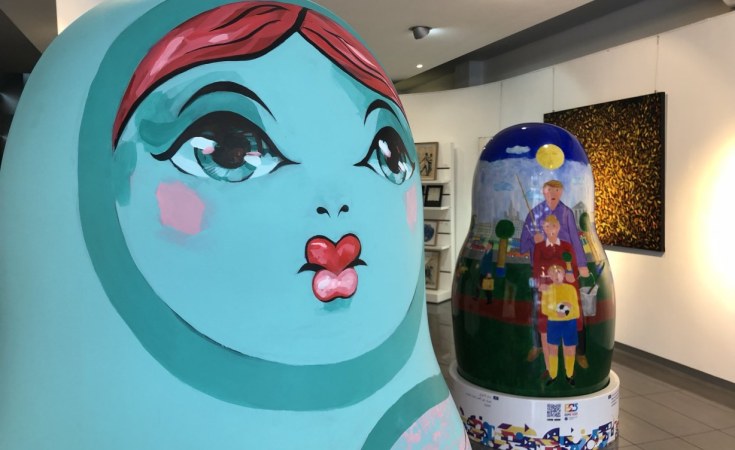World artists and designers reimagining the traditional Russian doll to promote the historic achievements of the World Expo
Two very important Russian ladies have visited South Africa this month, but neither has uttered a word during the entire visit. Of course, we are talking about the matryoshka dolls exhibited as part of the art campaign launched in support of Russia's bid to host the World Expo in 2025.
Twenty unique human-sized pieces of the famous Russian dolls have been exhibited in ten cities – Barcelona, Brussels, Paris, Milan, Dubai, Shanghai, Berlin, Buenos Aires, London, and Cape Town – all to celebrate the achievements of this prestigious event, made during the course of its long history.
The matryoshka, usually a set of hollow wooden dolls that can be nested in one another, and depicting ladies in traditional Slavic dresses, has earned its fame as one of the most recognizable artifacts of Russian culture. However, contrary to popular opinion, the toy and its concept do not date back to the Middle Ages, but were first created as an art project in the late 19th century. In fact, it was the World's Fair in Paris in 1900, where the doll's universal fame started. The artwork representing a new take on folk themes, packaged into such a brilliantly peculiar shape, was received exceptionally well, taking gold at the event and immediately becoming one of Russia's main cultural symbols. It later made a big comeback at the Expo in Tokyo in 1970, where the biggest matryoshka was exhibited as a 72-piece set of stacking dolls.
Today the matryoshka expresses a wide range of positive ideas and concepts, which resonate with the mission of the World Fair. Perhaps it is that versatility, combined with a strong association with Russian culture, which determined its place at the heart of this campaign.
Artists from all over the world developed the designs for the matryoshkas, making each piece unique with its own theme and style. The idea behind the campaign was to install two of the dolls in every city of the campaign – one by a Russian designer and one by a locally recognized artist.
The artists, whose works were exhibited in Cape Town, for instance, did an exceptional job of demonstrating the distinctness of the differences between them. The doll painted by the Russian artist Andrey Karpov, clearly reflects such tropes of the original as family and tradition, but in a very appealing and emotional compilation of scenes covering the doll from all side. The other piece made by Cape Town's local fine artist Claude Chandler is executed in his own distinctive style, which utilizes self-made foam stamps to produce an effect similar to pixelization, but with words instead of pixels.
The dolls convey their message through the technology of augmented reality, which is not only more engaging than some traditional media, but is also there to serve as a remarkable example of the mix between tradition and technology. Any smartphone owner can interact with it by downloading an app dedicated to the Expo, and pointing their camera towards the doll, and then they will be able to discover 18 marvels that the Expo has brought into our world. These not only include inventions and technologies, but also cover several cultural artifacts such as the famous monument to the Worker and the Kolkhoz Woman, holding up their hammer and scythe, representing the people of the Soviet Union.
After the dolls have spent some time in their respective cities, they will all meet again in Paris before the BIE General Assembly in November, when the decision on the destination of the Expo will be announced. In the meantime, the toys continue to acquaint people around the world with some of the technological and cultural marvels associated with the Fair's history. These include many things that have become part of our lives, like the telephone or the X-ray, and some that have even changed cities' skylines, like the Eifel Tower in Paris, constructed specifically for the exhibition in 1889, or a certain Ferris wheel in London, the design of which also holds many connections with the event.
Considering the number of items, which were produced by Russia, represented in the AR project, it becomes obvious how robust the nation's presence has been at the Expo and what an important role the country has played in it. It is no surprise therefore that the country would again be eager to invite the Expo to one of its cities, and having already proven itself a gracious host for international events, with this campaign Russia may finally have gained the recognition it needed to achieve this goal.


